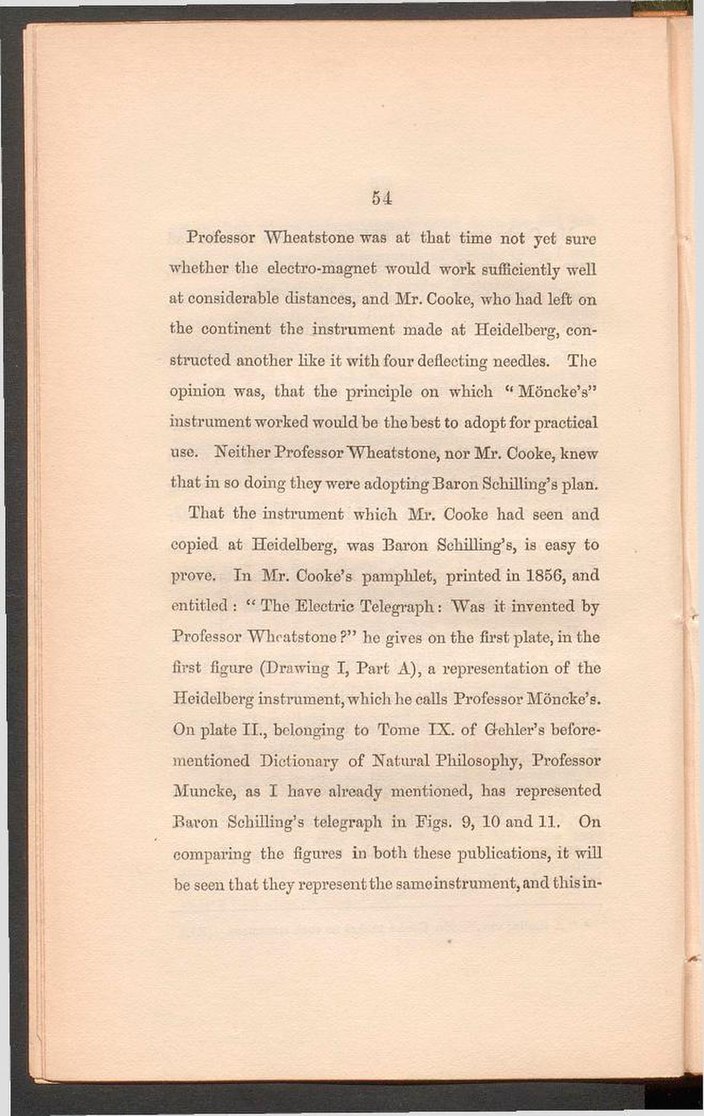54
Professor Wheatstone was at that time not yet sure whether the electro-magnet would work sufficiently well at considerable distances, and Mr. Cooke, who had left on the continent the instrument made at Heidelberg, constructed another like it with four deflecting needles. The opinion was, that the principle on which "Möncke's" instrument worked would be the best to adopt for practical use. Neither Professor "Wheatstone, nor Mr. Cooke, knew that in so doing they were adopting Baron Schilling's plan.
That the instrument which Mr. Cooke had seen and copied at Heidelberg, was Baron Schilling's, is easy to prove. In Mr. Cooke's pamphlet, printed in 1856, and entitled: "The Electric Telegraph: "Was it invented by Professor Wheatstone ?" he gives on the first plate, in the first figure (Drawing I, Part A), a representation of the Heidelberg instrument, which he calls Professor Möncke's. On plate II., belonging to Tome I X . of Gehler's beforementioned Dictionary of Natural Philosophy, Professor Muncke, as I have already mentioned, has represented Baron Schilling's telegraph in Figs. 9, 10 and 11. On comparing the figures in both these publications, it will be seen that they represent the same instrument, and this in-
